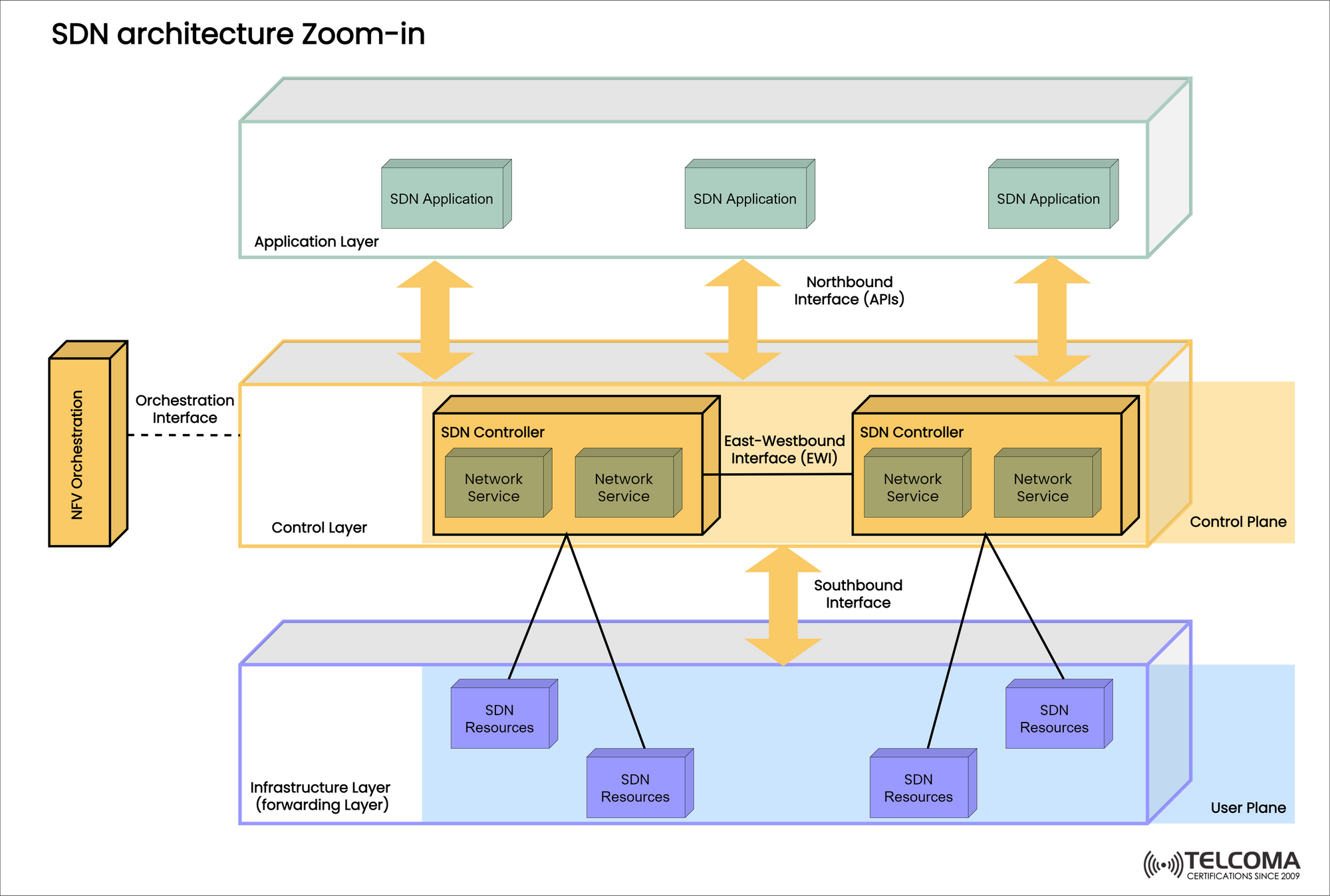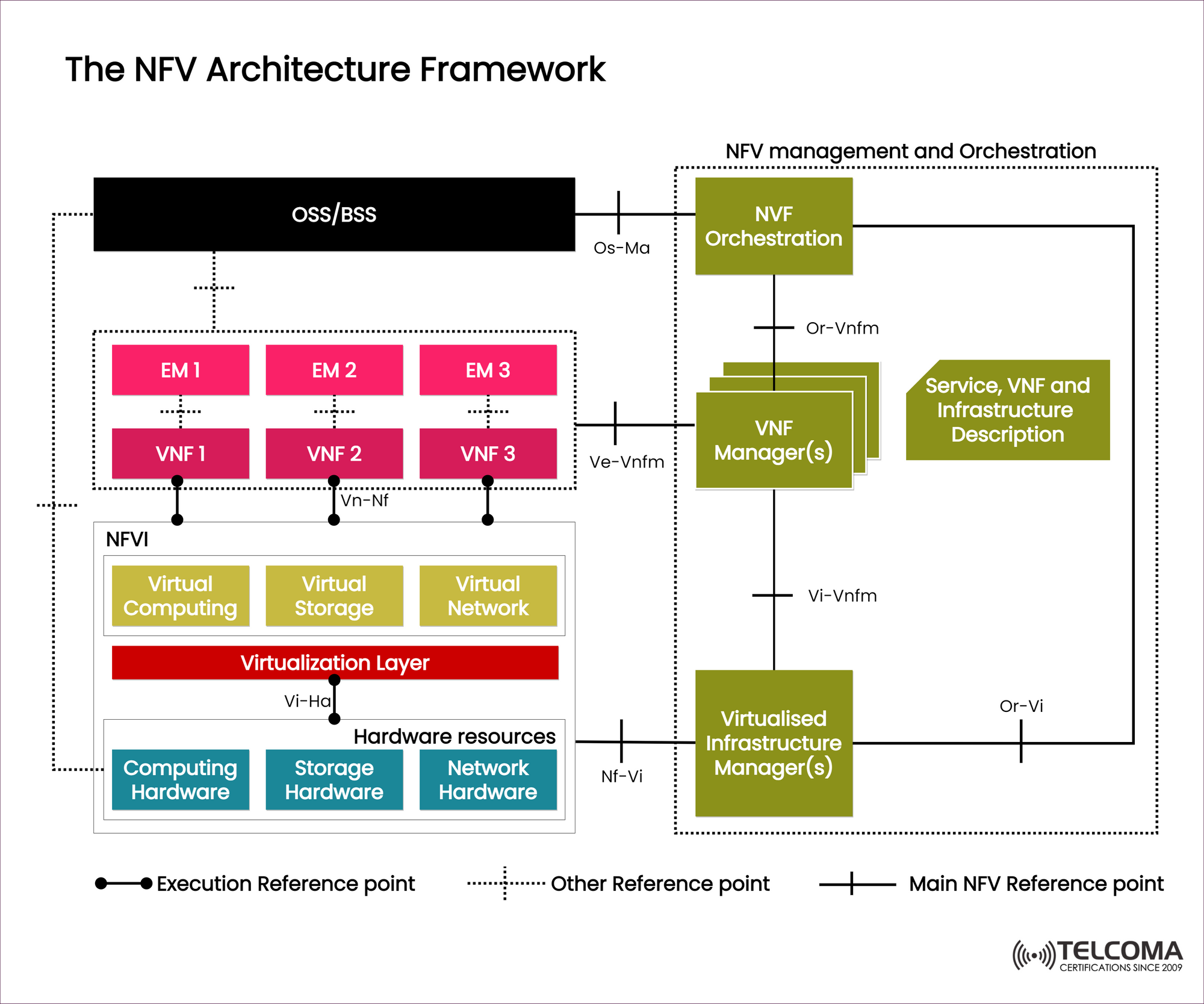SDN/NFV


Software Defined Networking (SDN) and Network Function Virtualization (NFV) are two of the most revolutionary technologies in the networking industry today. These two technologies have the potential to transform the way networks are designed, deployed, and managed. In this article, we will discuss SDN/NFV from a technical perspective.
Overview of SDN
SDN is an approach to networking that separates the control plane from the data plane. In traditional networks, the control plane and the data plane are tightly integrated. The control plane is responsible for making decisions about how data is forwarded through the network, while the data plane is responsible for actually forwarding the data. In an SDN architecture, the control plane is decoupled from the data plane, which allows for more flexible and dynamic network management.
In an SDN architecture, there are three main components: the SDN controller, the data plane devices, and the southbound API. The SDN controller is the brain of the network. It communicates with the data plane devices via the southbound API and controls their behavior. The data plane devices are responsible for forwarding traffic through the network. They communicate with the SDN controller via the southbound API and receive instructions from the controller on how to forward traffic.
The southbound API is the interface between the SDN controller and the data plane devices. There are several southbound APIs available, including OpenFlow, NETCONF, and OVSDB. OpenFlow is the most widely used southbound API and is supported by most SDN devices.
One of the main benefits of SDN is the ability to centralize network management. With traditional networks, network administrators have to manage each device separately. In an SDN architecture, all network management is done through the SDN controller. This makes it easier to configure and manage networks, especially large networks.
Another benefit of SDN is the ability to dynamically control network traffic. With traditional networks, network administrators have to manually configure network devices to forward traffic a certain way. In an SDN architecture, network administrators can use software to dynamically control network traffic. This allows for more efficient use of network resources and can help prevent network congestion.
Overview of NFV

NFV is an approach to network design that virtualizes network functions. In traditional networks, network functions are implemented using dedicated hardware devices. For example, a firewall might be implemented using a dedicated hardware firewall device. In an NFV architecture, network functions are implemented using software that runs on standard servers.
In an NFV architecture, there are three main components: the NFV infrastructure, the virtual network functions (VNFs), and the management and orchestration (MANO) system. The NFV infrastructure is the physical infrastructure that supports the virtualization of network functions. It includes servers, storage devices, and networking equipment.
The VNFs are the software implementations of network functions. They run on top of the NFV infrastructure and can be easily deployed, scaled, and upgraded. Examples of VNFs include firewalls, load balancers, and virtual routers.
The MANO system is responsible for managing and orchestrating the VNFs. It includes several components, including the virtual network function manager (VNFM), the virtualized infrastructure manager (VIM), and the network function virtualization orchestrator (NFVO). The VNFM is responsible for managing the lifecycle of the VNFs. The VIM is responsible for managing the underlying NFV infrastructure. The NFVO is responsible for orchestrating the VNFs and the NFV infrastructure.
One of the main benefits of NFV is the ability to reduce costs. In traditional networks, network functions are implemented using dedicated hardware devices, which can be expensive to purchase and maintain. In an NFV architecture, network functions are implemented using software that runs on standard servers, which are typically less expensive. NFV also makes it easier to scale network functions. With traditional networks, network administrators have to purchase and install additional hardware devices to scale network functions. In an NFV architecture, network administrators can simply deploy additional instances of the VNFs.
Another benefit of NFV is the ability to quickly deploy new network functions. With traditional networks, deploying a new network function typically involves purchasing and installing a new hardware device. In an NFV architecture, network administrators can simply deploy a new instance of the VNF.
SDN and NFV Integration
SDN and NFV are complementary technologies. SDN provides the network control and management capabilities, while NFV provides the network functions. By combining SDN and NFV, network administrators can create a more flexible, scalable, and cost-effective network.
One of the main benefits of combining SDN and NFV is the ability to dynamically control network functions. With traditional networks, network functions are typically implemented using dedicated hardware devices that are statically configured. In an SDN/NFV architecture, network administrators can dynamically configure and control network functions based on network traffic and other variables.
Another benefit of combining SDN and NFV is the ability to implement network functions at the edge of the network. In traditional networks, network functions are typically implemented in centralized data centers. In an SDN/NFV architecture, network functions can be implemented at the edge of the network, closer to the end-users. This can improve network performance and reduce latency.
Challenges and Considerations
While SDN and NFV offer many benefits, there are also several challenges and considerations that network administrators need to be aware of.
One challenge is the complexity of implementing SDN and NFV. Both technologies require significant changes to the traditional networking architecture, and implementing them can be a complex and time-consuming process. Network administrators need to have a deep understanding of both technologies and be prepared to invest in training and education.
Another challenge is the need for new skill sets. SDN and NFV require a different skill set than traditional networking. Network administrators need to be familiar with software development, automation, and virtualization technologies.
Another consideration is security. SDN and NFV introduce new security risks that network administrators need to be aware of. For example, in an SDN architecture, the SDN controller is a single point of failure, and if compromised, could have devastating effects on the network. Network administrators need to implement strong security measures, including network segmentation, access controls, and encryption.
Conclusion
SDN and NFV are two of the most transformative technologies in the networking industry today. By separating the control plane from the data plane and virtualizing network functions, network administrators can create more flexible, scalable, and cost-effective networks. However, implementing SDN and NFV can be a complex and time-consuming process, and network administrators need to be aware of the challenges and considerations associated with these technologies.
